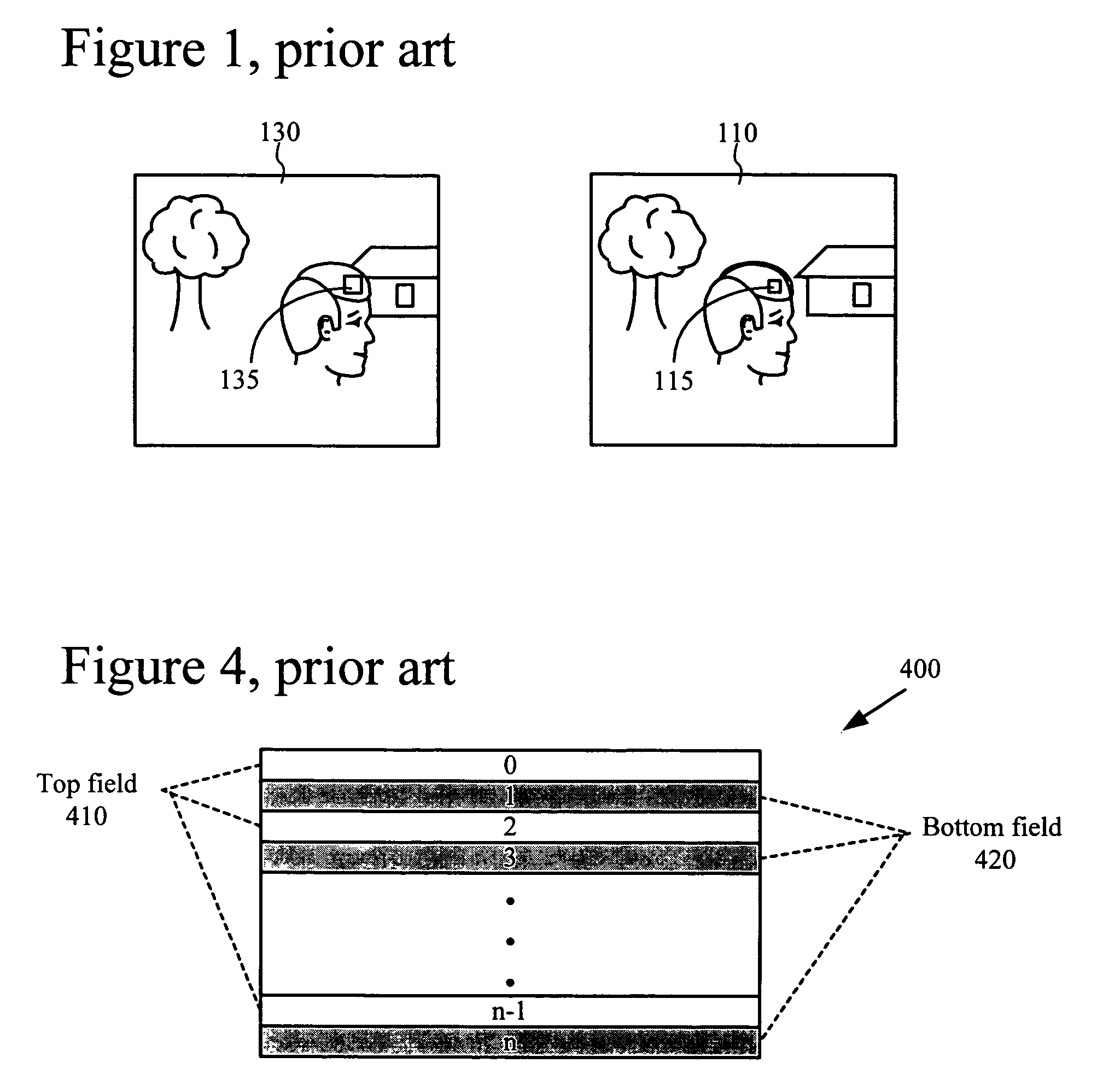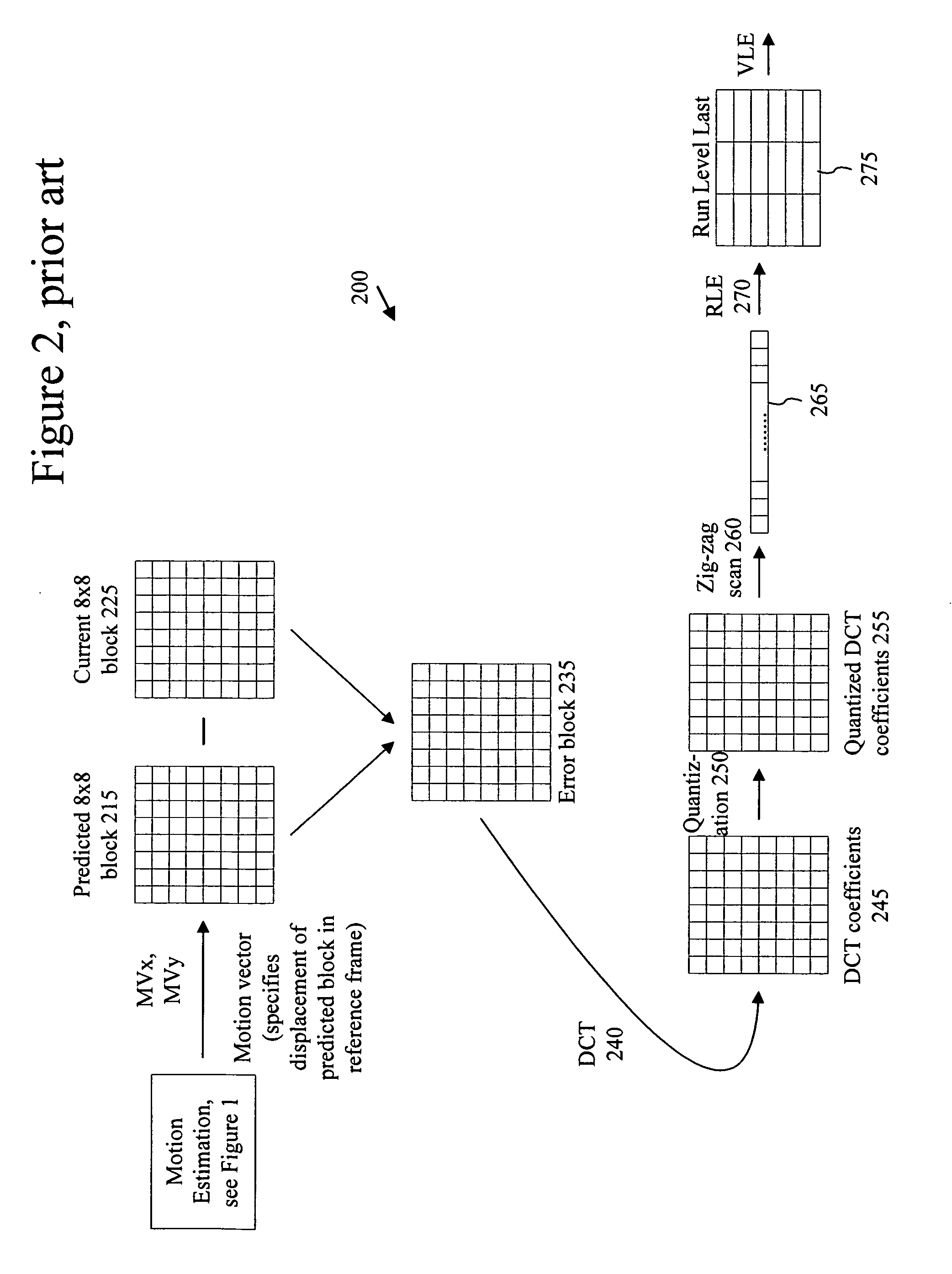Intensity estimation/compensation for interlaced forward-predicted fields
a forward-predicted field and intensity estimation technology, applied in the field of intensity estimation/compensation for interlaced forward-predicted fields, can solve the problems of large amount of digital video storage and transmission capacity, lossless compression, and many computers and computer networks lack the resources to process raw digital video, so as to improve the prediction of motion compensation
- Summary
- Abstract
- Description
- Claims
- Application Information
AI Technical Summary
Benefits of technology
Problems solved by technology
Method used
Image
Examples
Embodiment Construction
"d_n">[0148]FIGS. 33A and 33B are flowcharts showing techniques for hybrid motion vector prediction during encoding and decoding, respectively.
[0149]FIG. 34 is a diagram showing an association between luma blocks and the 4 MVBP element.
[0150]FIGS. 35A and 35B are flowcharts showing techniques for encoding and decoding, respectively, using a motion vector block pattern.
[0151]FIG. 36 is pseudocode for encoding motion vector differential information and a dominant / non-dominant predictor selection for two reference field interlaced P-fields.
[0152]FIGS. 37A and 37B are flowcharts showing techniques for encoding and decoding, respectively, of motion vector differential information and a dominant / non-dominant predictor selection for two reference field interlaced P-fields.
[0153]FIG. 38 is a diagram of the chroma sub-sampling pattern for a 4:2:0 macroblock.
[0154]FIG. 39 is a diagram showing relationships between current and reference fields for vertical motion vector components
[0155]FIG. 40...
PUM
 Login to View More
Login to View More Abstract
Description
Claims
Application Information
 Login to View More
Login to View More - R&D
- Intellectual Property
- Life Sciences
- Materials
- Tech Scout
- Unparalleled Data Quality
- Higher Quality Content
- 60% Fewer Hallucinations
Browse by: Latest US Patents, China's latest patents, Technical Efficacy Thesaurus, Application Domain, Technology Topic, Popular Technical Reports.
© 2025 PatSnap. All rights reserved.Legal|Privacy policy|Modern Slavery Act Transparency Statement|Sitemap|About US| Contact US: help@patsnap.com



